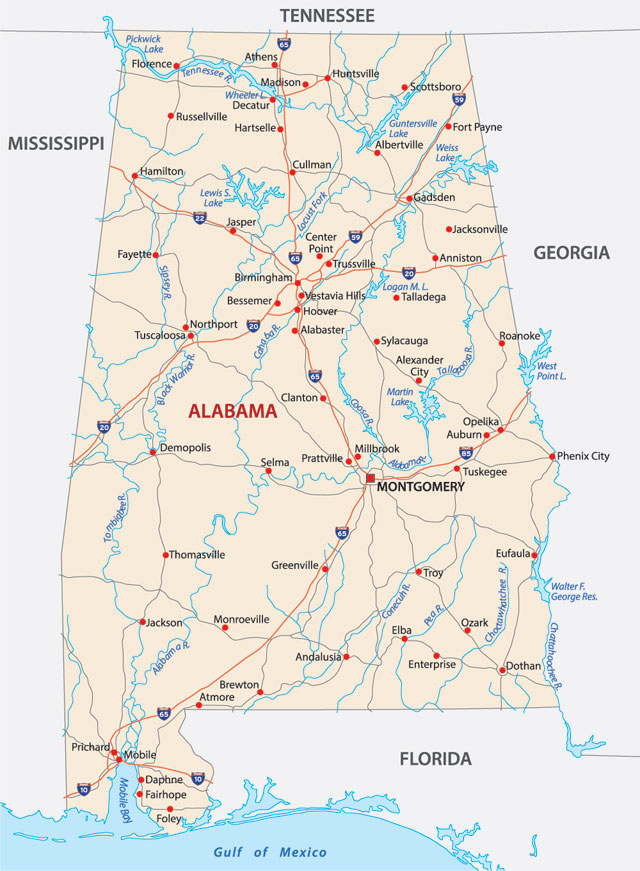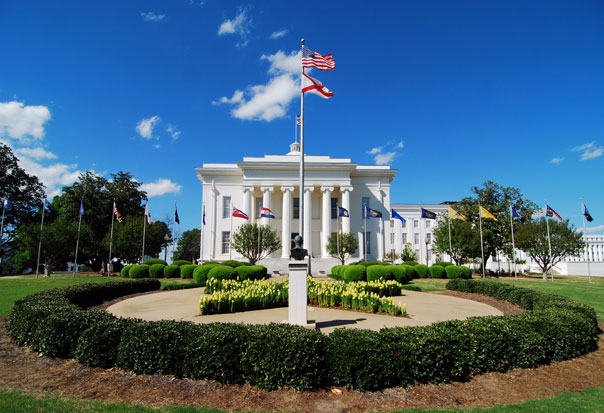Spanish colonists reached Alabama in the 16th century, but did not settle. It was 160 years later that the French built a settlement (Old Mobile) and made it part of Louisiana (the colony in American named after King Louis).
Following the French defeat to the British in 1763 it became part of British West Florida but it was lost in the American Revolutionary War and divided between the United States and Spain. The Spanish-American war saw all Spanish lands given up to the United States in 1813.
The Alabama Territory was created by the United States Congress on March 3, 1817. Huntsville was the first capital of Alabama from 1819 to 1820, when it moved to Cahaba.
This was a time known as 'Alabama Fever' with settlers wanting to take advantage of fertile land for cotton farming. Planters moving in to the area brought slaves with them to work the new cotton plantations. The area also attracted many poor, white people who became subsistence farmers. As a result of this Alabama's population grew from 10,000 in 1810 to 300,000 people in 1830. Up until this time, American Indians had been able to stay on their traditional lands. In 1830 the Indian Removal Act saw their complete removal.
From 1826 to 1846, Tuscaloosa served as the capital, when it was moved to Montgomery. The first capitol burned down in 1849 and the one existing today is its replacement, built in 1851.
By 1860, the population was nearly 1 million of which half were slaves. In 1861 Alabama joined the Confederate States of America. Alabama contributed about 120,000 soldiers to the war effort.
At the end of the war, Alabama's slaves were freed in 1865. It returned to the Union in 1868.
The war was partly about the growing gap between the wealthy industrialising north and the relatively poor farming south. The war did nothing to help change this balance. Racially-segregated schools were introduced in 1875 and railways in 1891. African Americans were to be second-class citizens once more. Nearly all African Americans had lost the ability to vote until as recently as 1965.
Farming suffered in the 20th century due to the failure of the cotton crops due to boll weevil infestation. With no work, many tens of thousands of African Americans left Alabama for the industrialised north of the US. At the same time, many farm labourers, both black and white, moved to the cities of Alabama looking for work. Birmingham was soon the 19th-largest city in the United States with over 30% of the Alabama's population. Work was based on coalfields and steel.
These industries were in great demand in World War 2, so the area prospered with jobs of the War Effort industries. This also caused the state to become less dependent on cotton and more on factory work.
Alabama is now involved in aerospace, health care and heavy industries, including automobile manufacturing, mining and steel making. Now the amount of wealth generated by farming is only one percent.




